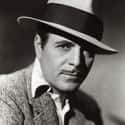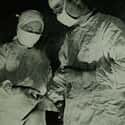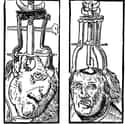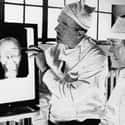-
(#6) Joe Kennedy Had A Lobotomy Performed On His Daughter Rosemary, Because She Was A Potential Embarrassment To The Family
Rosemary Kennedy was the third child born to Joseph Sr. and Rose Kennedy. She was the younger sister of former President John F. Kennedy, and, due to a possible brain injury that she received at birth (a nurse reportedly held her in the birth canal for two hours while waiting for a doctor to arrive), Rosemary was the mentally slowest person in the entire family. This seemed fine when she was a child, but once she became an adult, her outbursts led her father to seek treatments.
Rosemary's sister, Kathleen, looked into the newest treatment at the time - the lobotomy. She rejected it as an option, but Joseph Sr. secretly took Rosemary to have it performed. It had drastic consequences, leaving her unable to walk properly or speak properly. As a result, she spent the rest of her life hidden away in a residential care facility and her plight inspired one of her sisters, Eunice, to create the Special Olympics.
-
(#4) The Procedure Was Used To Treat Schizophrenia, Compulsive Disorders, And Depression
Prior to the beginning of the WWII, there were over 400,000 people in mental institutions. During the early 20th century, most people with a mental illness were put into institutions. The lobotomy was designed to help the patients, specifically those with schizophrenia, depression, and compulsive disorders.
Once they were treated, they would either be able to function in regular society, be cared for by family, or be less of a hassle for the nurses and orderlies in the asylums.
-
(#13) Actor Warner Baxter Received A Lobotomy To Help With His Arthritis Pain
Warner Baxter was a silent film star who was in movies like 42nd Street and The Cisco Kid. His career slowed down when films were no longer silent, but not because he didn't have the voice for it. Instead, he suffered from chronic pain and arthritis, which hampered his ability to function well while on set. The pain was so bad that he stopped eating properly.
The doctors decided to give him a lobotomy during his second hospitalization in the hope of lessening his pain. Whether or not the procedure worked is still uncertain, as Baxter developed pneumonia shortly afterwards and died in 1951 at the age of 62.
-
(#8) Psychologist Walter Freeman Once Performed 20 Lobotomies In One Day
Once Freeman had simplified his ice pick lobotomy procedure, he could perform many of them in one day. In his view, he was "helping" as many patients as possible. His record was 20 lobotomies in one day. Freeman was reportedly a bit of a showman and he enjoyed having an audience, even when the procedure went wrong and killed his patients.
Over the course of his career, Freeman performed 2,900 lobotomies, with his last one taking place in 1967 and ending with the death of the patient after Freeman accidentally severed a blood vessel in the person's brain.
-
(#11) The Idea For Lobotomy Stemmed From The Practice of Trepanning
Trepanning was an ancient practice that involved drilling holes in people's skulls for ritualistic purposes. Archeologists have found skeletons with trepanation holes that are thousands of years old. There is evidence that it was practiced in Ancient Greece, Polynesia, and even parts of Asia. The practice of trepanation didn't die out quickly - in fact, people in parts of Africa and Polynesia still used it up until the 19th century, where it became one of the inspirations for the lobotomy.
-
(#1) Gottlieb Burkhardt Removed Parts Of Schizophrenic Patient's Brains In The 1890s
Gottlieb Burkhardt, a doctor at a mental asylum in Switzerland, was inspired by the work of Friederich Golz, who removed parts of the brains of dogs to make them calmer. In 1892, Burkhardt decided to conduct a similar procedure on six patients in his asylum. All suffered from agitation and hallucinations. Burkhardt removed sections of their cerebral cortex in the hopes of curing them.
Although the complete results of his procedure (which didn't yet have a name) are unknown, the four who survived the operation were reportedly calmer. However, Burkhardt's experiments were viewed negatively in the medical community, so for 40 years, research into this new field of surgery was heavily frowned upon.
New Random Displays Display All By Ranking
About This Tool
Lobotomy is neurosurgery that removes the connecting tissue of the prefrontal cortex of the brain. It was mainly used to treat some mental illnesses from 1930 to 1950. It was also the world's first psychiatric surgery. The recognized inventor of lobectomy won the Nobel Prize in Physiology and Medicine. However, less than a year later, Antonio Moniz was criticized, and the lobectomy began to be resisted worldwide.
Due to the low precision of the operation performed on the brain under crude conditions, and surgical patients had symptoms similar to dementia and mental retardation after the operation. The random tool explains 14 things about the crude surgical procedure of early lobotomy.
Our data comes from Ranker, If you want to participate in the ranking of items displayed on this page, please click here.
















